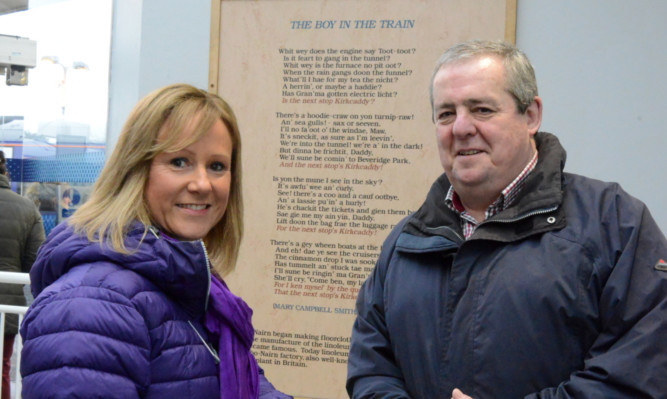More than 100 years on, amateur wordsmiths have been challenged to produce a 21st Century version of the famous poem which immortalised Kirkcaldy’s “queer-like smell”.
The Boy in the Train (click here for full version) recounts an excited youngster’s train journey to the Fife town and how the familiar sweet scent from its linoleum industry told him that the “next stop’s Kirkcaddy”.
Children and adults with a love of the Lang Toun are invited to write their own poem about the place by its business improvement district company, Kirkcaldy4All.
The competition is aimed at engaging with the wider community and builds on an initiative sharing stories and information about local businesses digitally and through social media.
Mary Campbell-Smith’s poem, first published in 1913 and now on display in Kirkcaldy Railway Station, has inspired an extension of the campaign to engage with the wider community.
Kirkcaldy4All manager Bill Harvey said: “For decades, children across Scotland have learned and loved the poem of the wee boy travelling to see his granny in Kirkcaldy.
“It is a wonderful piece of prose, packed with sensory references to the boy’s journey.”
Entries must be not a word longer than the poem written by headmaster’s wife Campbell Smith, first published in 1913, inspired by a noisy lad on the train on the family’s annual holiday to Elie.
Mr Harvey said: “Mary Campbell Smith used 222 words for her poem and we are setting that as an upper limit.
“Beyond that rule, all we are asking is for everyone to describe what they love about Kirkcaldy.”
Sandwiched between Burns Night and national poetry festival StAnza, Kirkcaldy4All hopes the competition will be become a regular addition to Scotland’s literary calendar.
Mr Harvey said: “We have a long history and a wonderful association with the arts and Scottish culture, and this competition will help to celebrate that fact.”
Mr Harvey said Kirkcaldy4All’s digital and social media content had proved popular with businesses and customers and now includes video clips with the help of Fife-based filmmaker David Cruickshanks.
He said: “The benefits have been considerable and so we are expanding the campaign and the poetry competition is a great way for us to engage with our wider community.”
A selection of the poems will be displayed in the town on February 29, with the winners chosen by a panel of judges.
Entries should be emailed to suzie@kirkcaldy4all.co.uk or by post or hand to Creative Kirkcaldy, c/o Kirkcaldy4All, 189a High Street, Kirkcaldy, KY1 1JA.
